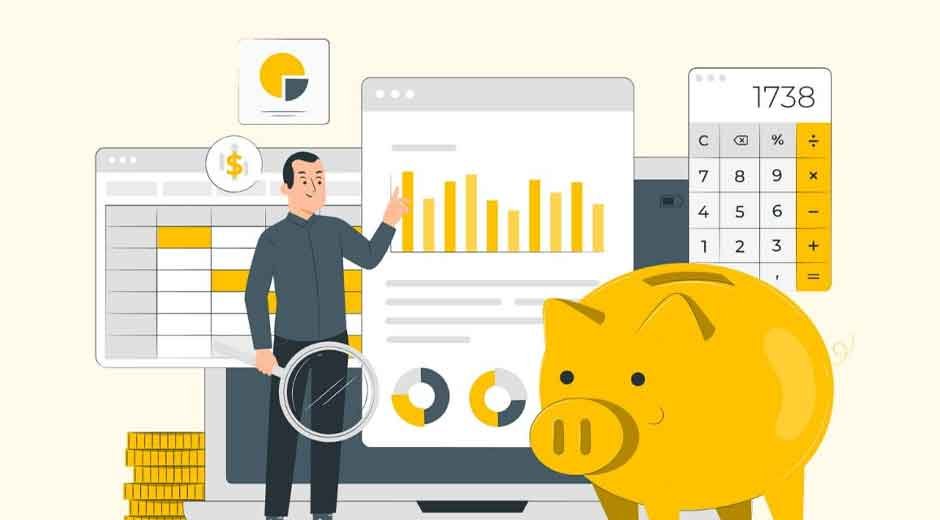Skip to the good bit
ToggleManaging personal finance documents is an essential aspect of everyday life that can sometimes feel overwhelming. With a myriad of bank statements, bills, receipts, and investment records accumulating over time, staying organized is crucial for financial health and clarity. Proper organization not only helps in keeping track of finances but also prepares you for future planning, audits, or emergencies. With the growing trend of digital documentation, there’s an opportunity to embrace creativity in how you manage and organize these critical documents. Here, we explore ten creative strategies to keep your personal finance paperwork in check and ensure financial efficiency.
CREATE A FINANCIAL DOCUMENT FILING SYSTEM
The first step in organizing personal finance documents is to establish a comprehensive filing system. Start by gathering all your paperwork and categorize it into main groups such as income, expenses, debts, investments, taxes, and utility bills. Use clearly labeled folders or binders to separate these categories, ensuring that each document has its designated place. Color coding can add an extra layer of organization, allowing you to identify sections at a glance. If physical space is a constraint, consider transferring documents to a digital format, using scanned copies stored in dedicated folders on your computer. Ensure your digital files mimic your paper system in terms of structure and accessibility.
Incorporating a digital aspect can significantly streamline your filing process. Use cloud storage services such as Google Drive or Dropbox to ensure that your digital documents are securely backed up and accessible from multiple devices. Be sure to maintain digital documents with the same categorizations used in your physical filing system to keep the transition seamless. In addition, remember to review your files quarterly or annually to keep your filing system neat and free from unnecessary paperwork.
GO PAPERLESS WITH AUTOMATED BILLING
With advances in technology, many companies now offer customers the opportunity to receive electronic statements instead of paper ones. Going paperless is an excellent way to reduce clutter and streamline document management. Contact your service providers—such as banks, credit card companies, utility providers, and insurance agencies—and opt for electronic billing. You’ll receive your bills and statements via email, which you can then download and store in your digital filing system. This process not only saves physical space but also makes it easier to access financial documents whenever and wherever needed.
To optimize paperless billing and retain the files you need, create a system for managing incoming digital documents. Set up dedicated folders in your email or cloud storage to automatically route these documents to their appropriate locations upon receipt. Enable reminders or automatic payments for all your accounts to ensure timeliness in settling bills. However, keeping a few months’ worth of statements and invoices in a simple spreadsheet can offer a powerful overview of your financial situation, making it transparent and easy to analyze trends.
USE NOVELTY BANK STATEMENTS FOR MOTIVATION
A creative yet practical approach to managing your finances involves using Novelty Bank Statements. These statements can provide unique insights into your spending habits, portrayed in an entertaining manner that captures attention and may motivate you to make more informed decisions. Personalized statements highlight your monthly spending patterns in categories like dining, groceries, and utilities, enabling a deeper understanding of your financial habits.
Apart from standard statements, you might design colorful graphs or illustrations that depict your progress towards financial goals, investment contributions, or debt repayment status. Integrating visuals into your financial documents not only makes them more appealing but also aids in better comprehension and greater motivation to stay on track. Keeping these creative documents visible, either physically or digitally, serves as a constant reminder of your financial journey, encouraging you to remain disciplined and proactive in managing your finances.
EMBRACE PERSONAL LEDGERS AND JOURNALS
Despite a trend toward digitalization in managing personal finances, developing a habit of maintaining physical ledgers and journals can be therapeutic and beneficial. Purchasing a beautiful, sturdy journal to note down daily financial transactions or keep a record of monthly income and expenses encourages detailed tracking and can give a clear picture of financial habits over time. This method of organization invokes active engagement with your finances and allows for deeper reflection on spending patterns and budgeting strategies.
As you write notes, it’s essential to highlight significant financial decisions, achievements, or adjustments you plan to make moving forward. Reflecting on these notes regularly fosters greater financial discipline and awareness. You may also use these journals to jot down financial goals and action plans, encouraging focus and a positive healthy attitude towards money management. Make use of stickers, colored pens, or tape for visual appeal, ensuring the journaling experience remains enjoyable.
LEVERAGE BUDGETING APPS AND FINANCIAL SOFTWARE
In today’s digital age, budgeting apps and financial software offer revolutionary ways of managing personal finance documents seamlessly. Applications like Mint, YNAB (You Need A Budget), or Personal Capital can auto-categorize transactions, generate spending reports, and give real-time insights into your financial health. These tools reduce the manual effort involved in tracking expenses and organizing financial documents, freeing up time for analyzing and making informed decisions.
To fully benefit from these apps, ensure all your financial accounts, from banking to investment platforms, are linked to the software. Set up automatic budget alerts to keep spending in check and customize dashboard views to reflect what matters most to you—be it savings goals, net worth tracking, or debt payoff progress. Along with organizing financial information efficiently, these programs can also store digital files, such as receipts or invoices, further simplifying documentation management.
ADOPT A 30-DAY CHALLENGE FOR FINANCIAL DOCUMENTATION
Engaging in a structured 30-day challenge dedicated to personal finance documentation can start a productive habit of maintaining organized financial records. Each day, focus on a different aspect of your financial management process. Begin by organizing and categorizing existing documents, whether digitally or physically. As the days progress, challenge yourself to explore new tools for financial planning, set new budgeting goals, or identify weaknesses in your current financial habits that need to be addressed.
Incorporate a daily financial review, which could be as simple as reviewing bank transactions, updating your budget, or summarizing your daily spending. Track each day’s task completion using a checklist or calendar, setting milestones to celebrate your accomplishments at each step. By the end of this 30-day period, not only will your financial documents be meticulously organized, but you will also develop a consistent and long-lasting habit of keeping your finances in top shape.
IMPLEMENT END-OF-MONTH FINANCIAL REVIEWS
A monthly review of your finances serves as both an organizational and planning function, helping you stay informed on your financial standing and prepared for future needs. At the end of each month, allocate time to go through all financial documents, ensuring their organization aligns with changes in income, expenses, or any new financial goals. This review session also includes reconciling bank statements, checking investment status, and preparing for upcoming necessary expenses.
During your end-of-month sessions, make it a habit to do a thorough analysis of financial patterns, successes, and areas for improvement. Adjust budget allocations and spending strategies accordingly, and document any action plans aimed at achieving financial objectives for the next month. Not only does this maintain an orderly archive, but it also fosters a proactive approach to financial health and wealth generation.
OPT FOR DIGITAL RECEIPTS AND EXPENSE TRACKING
Incorporating digital receipts and expense tracking into your finance management routine is an effective way of keeping records and ensuring accuracy. Many retailers offer digital receipts; make it a point to request these when making purchases. Automatically forward these receipts to a dedicated email folder or digital repository where they can be stored and easily accessible. For managing expenses, explore different mobile apps designed to scan and store receipts while categorizing them according to type and date. This not only saves time in filing but also allows for detailed spending reports that highlight your financial activity accurately. Additionally, digital management aids in efficient tax preparation as expenses can quickly be distilled and presented if needed for deduction claims. Just as taking a prompt engineering course can teach you to organize and structure information effectively, ensuring financial documents are systematically stored and easily retrievable simplifies end-of-year financial duties immensely.
CREATE A SECURE SPACE FOR SENSITIVE DOCUMENTS
While much of our focus on document organization revolves around accessibility, security is equally crucial, especially for sensitive financial documents like tax returns, wills, or insurance policies. Create a secure, dedicated environment—be it a drawer, safe, or password-protected digital folder—exclusively for such documents. Ensure that safety measures are robust yet allow quick access when necessary.
Implement strong passwords or two-factor authentication for digital security and consider encrypting particularly sensitive files. Consistently review your security practices and stay updated on new threats to maintain the integrity and confidentiality of your documents. Settle on a replace-or-backup policy for enduring peace of mind, ensuring that copies of these critical documents remain available in case of emergencies or damage.
REGULARLY DECLUTTER UNNECESSARY DOCUMENTS
Personal finance organization is not just about managing what’s present but also involves eliminating what is no longer needed. At regular intervals, declutter your financial documents, focusing on items you no longer need to retain, such as old bills, expired warranties, or redundant statements. Shred or securely delete these documents to prevent potential misuse or cluttering of your system.
Keep in mind the recommended retention periods for different types of financial documents; for instance, tax records are often retained for at least seven years. Establish a habit of decluttering along with your periodic financial reviews to maintain an uncluttered, efficient, and stress-free financial document management system. Letting go of unnecessary papers ensures that your current records receive the attention they deserve, making your financial journey a more focused and rewarding endeavor.
CONCLUSION
Efficiently managing personal finance documents is foundational to achieving financial wellbeing. Applying creative strategies such as digital filing systems, engaging budgeting apps, and visually appealing Novelty Bank Statements not only eases everyday finance management but also makes the entire process an empowering experience. By organizing your documents methodically and staying informed with frequent reviews, you build a solid financial foundation that supports your current goals while preparing you for future aspirations. Adopt these strategies and welcome an era of financial clarity and control in your life.







